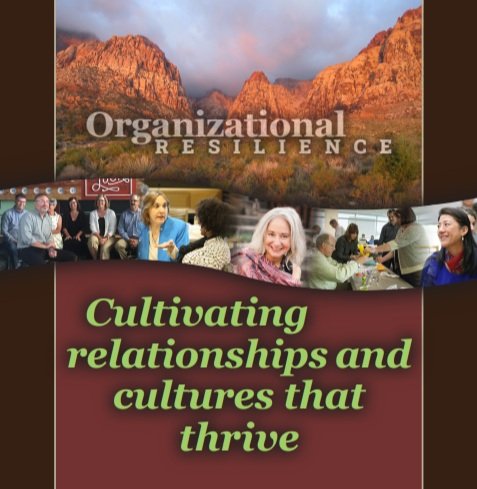When tensions rise ...
/Perhaps the most common desired outcome I hear from coaching clients is to learn how to better navigate difficult conversations.
It is understandable. Conflict can feel incredibly uncomfortable, destabilizing, and even threatening. Our emotions get triggered, our words mangled, and our demeanor disheveled. We don’t feel in control in an atmosphere that is charged. That can lead to feeling exposed in a way that we feel a need to protect ourselves.
Self-protection shows up in a lot of ways. The most common armors we adorn are defensiveness and righteousness, which can lead to lashing out, avoidance and/or stubbornness. And while they may feel justified, they do little to advance the issues, solicit growth, or foster a healthy workplace culture.
When we feel tensions rise it is our emotional intelligence awakening the need to tend to issues that matter to us. The sooner we do so, the more likely we can successfully cut through the intensity and unpack what is really transpiring underneath. The longer we wait, the more likely those tensions are to simmer until they boil over into resentment, building our case against others, anchoring our assumptions as truth, and our hurt as proof of being wronged.
In Brene Brown’s book, “Dare to Lead”, she introduces us to her concept of, “Let’s rumble”, as a way to show up differently in these spaces. “A rumble is a discussion, conversation, or meeting defined by a commitment to lean into vulnerability, to stay curious and generous, to stick with the messy middle of problem identification and solving, to break and circle back, when necessary, to be fearless in owning our parts…”. Now, that’s a lot to bring when we are having strong negative feelings, but it is an excellent framework to practice!
Recently I was coaching an emerging leader who was left with a lingering sour taste after how feedback was delivered from his manager. It was confusing as he is regularly being praised for his performance, but a recent conversation left him feeling off. As we unpacked the situation, we zeroed in on what was troubling him and why, and he felt confident to speak to his manager in a way that would clear the air and recalibrate the relationship.
The beauty of it: he didn’t wait, didn’t stew on it, didn’t extrapolate a fabricated story about his manager from the experience, rather he owned and acted on the emotional cues to get to the heart of the matter. He can do this in large part because there is a strong foundation of earned mutual trust in their relationship. That guy is going to be a remarkable leader!
A deepening of the relationship
People are often surprised when I tell them that my original conflict style was “avoid and placate”. If you would have told young Karen that one day I would lean into the discomfort to embrace a more honest conversation; that one day I would be teaching others the art of navigating those tough conversations with their messy emotions, I would have surely scoffed!
My motivation for addressing sticky issues isn’t because I enjoy a good “rumble” as Brene Brown would call it. I find the courage to have a real conversation because I understand that on the other side of that discomfort is the potential for a more meaningful relationship. It has been increasingly difficult for me to sit with something that is left unsaid, for I understand it is an obstacle to the very thing I want: connection.
The conflict is the way through
I had another client experience where both parties were feeling the growing tensions of their fractured relationship. In preparation for a facilitated dialogue, I interviewed them both independently. What we discovered was fascinating – they were experiencing the same frustrations! Neither felt respected by the other, nor did they feel heard.
Listening is often the first thing to evaporate when conflict is brewing. And yet, as Brown’s research shows, “the antidote to armoring up is staying curious”. If we can, “listen with same passion with which we want to be heard,” as psychologist Harriet Lerner invites us to do, we are better able to “show up with an open heart and mind so we can serve the work and each other, not our egos (or our fears)” [Brene Brown].
Burying discomfort doesn’t make it go away. It’s always lurking just below the surface, ready to trip us up. Unresolved issues are an improperly cared for wound that tend to fester and negatively impact health. Left unattended, the fracture spills into team dynamics and organizational culture, with significant costs.
How you manage tension shapes the norms of your workplace. Do you surface issues promptly and respectfully, or lean on passive aggressive techniques that erode trust and respect and add drama, inefficiencies, and ineffectiveness?
Feeling tension?
Acknowledge it, without judgment or justification.
Examine your emotions. Sit with them to understand them. Resist the urge to make someone else responsible for them.
Examine your motivations. Is it to be right, or to grow? To resolve an impasse? Advance a cause? To feel less stressed? Or to create a harmonious and respectful work environment?
Initiate a “rumble” conversation. Turn down the noise and seek common ground
Hunt for insights – for yourself and in understanding others. You don’t have to agree to validate someone’s experience.
Creating a culture of belonging
Addressing the tension we feel not only builds resiliency and relationships, it sends a message that we value diverse opinions, styles, approaches, and perspectives. Inviting real conversations with the intent of truly understanding provides a forum for creating alignment, making new agreements, and creating space for a fuller experience and an expression of potential.
Slow down, set aside your armor, and find the courage to find another way through.



